Gazing across a hemp field as morning sun peeks over the horizon — versus after a long, hot July day — what do you see?
Are the plants’ branches lifted to meet the first light, emanating a vibrant green? Or are they droopy and dull-colored — or worse, wilted with curled or yellow leaves?
How do healthy hemp plants look?
A healthy cannabis plant will carry an emerald green glow unlike most other plants. Contrasting with the surrounding landscape, the color is especially noticeable from higher vantage points. When roots take hold and plants find their stride through the vegetative stage, they should start to show off just how vigorous hemp growth can be!
As a bright and warm summer day gets underway, many hemp farmers affectionately refer to their plants “praying,” indicating the bright green, fan-shaped leaves are lifted, their tips erect toward the light. This is a sign of happy hemp taking advantage of sufficient water and nutrient content while utilizing the sunlight. These physical traits are indicators of the hemp plants’ conversion of resources into energy through photosynthesis.
Related: Kush Hemp E1 — A Revolutionary Breakthrough in Elite Hemp Cultivars
How do unhealthy hemp plants look?
Laying eyes on every plant in a hemp field would be ideal. Some hemp farmers have the time to walk their fields at somewhat regular intervals, searching not only for males and hermaphrodites but simultaneously inspecting for pests, disease and other issues that may affect the hemp plants’ health.
Carefully inspecting individual hemp plants, however, has become nearly impossible since the crop was elevated to industrial-agriculture scale. The average hemp farm’s footprint is too large to efficiently inspect every single plant.
Instead, most hemp farmers have come to understand what a field of healthy — or unhealthy — hemp looks like. Scanning the hemp field as a whole, or broken down into sections, helps farmers to gauge health without inspecting every plant. Below are a few signs to look for when identifying issues in a hemp field.
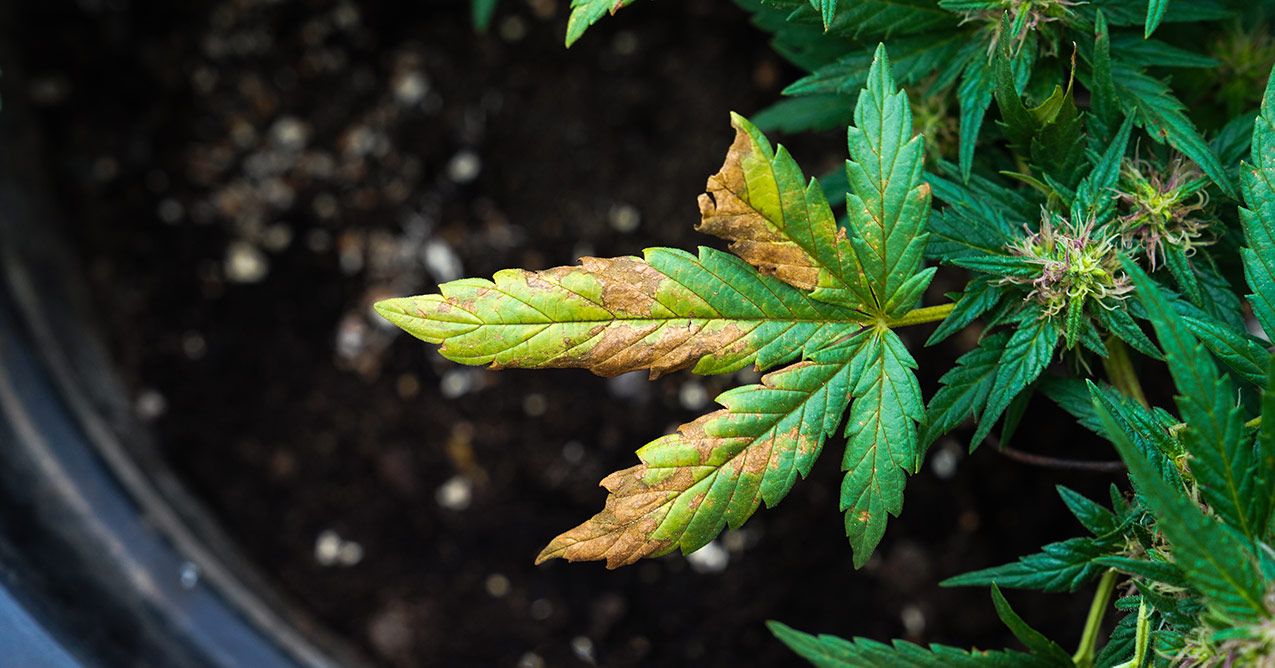
Is a hemp field uniform — in a healthy way?
If hemp fields — or field segments — have been planted at the same time with the same dependable genetics, farmers can expect a somewhat uniform field or uniform sections if proper soil testing and field prep were conducted prior to planting.
Scan for outliers, irregularities and signs of distress in these six areas:
1. New growth
2. Plant structure
3. Color and shape of leaves
4. Surrounding soil color
5. Condition of other plants or weeds growing adjacent
6. Wet and/or dry patches after watering
If hemp fields do not appear uniform, or reveal some irregularities, it’s likely worth a closer inspection.
Watering awareness
What to do when hemp plants droop? Water, water, WATER! If hemp plants were healthy last night but drooping now, they likely need more water.
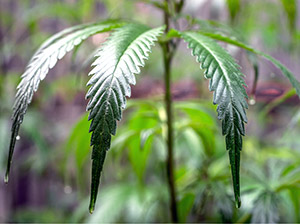
As hemp plants begin to stretch and take up more real estate, patchy new growth that doesn’t occur simultaneously with the rest of the hemp field may be an indicator of several issues. If one section is vigorous while another remains stunted, it’s worth checking first for irrigation problems — because a hemp plant without water doesn’t have long to live. Irrigation malfunctions often are the cause when one section of a hemp field is growing less vigorously.
Every field and climate has different watering requirements, and your particular soil conditions and microclimate will dictate appropriate watering times and amounts. In a well-draining, sandy loam field, it is suggested to water once per week in the early season, for approximately 7 hours. During the peak heat of summer, water must be increased significantly, giving each plant 1-2 gallons 2-4 times per week. Therefore, if you have 2,000 plants per acre, you will need up to 8,000 gallons per acre, per week.
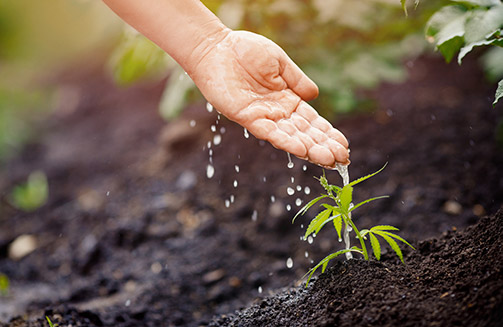
Checking your field’s moisture levels with a moisture meter is a sound plan, as some areas will dry more quickly than others. Adjust your watering schedule as necessary, and be aware that soggy plant roots can cause fungal problems, so pay attention to ensure your hemp plants are not over-watered. If plants are wilting despite proper soil moisture levels, it may be wise to discontinue watering until your soil dries.
Ineffective watering is not the only issue, however, that may cause irregular new growth. Sometimes, a closer inspection is needed once the problem area is discovered and the issue identified. Pests, large and small, can decimate portions of a hemp field. In Southern Oregon, deer have been especially problematic for young hemp plants in the 2020 season. A closer inspection may reveal any number of pests chomping away at tender, young hemp plants. Remember, an integrated pest management system (IPM) begins early: Preventive measures are key.
Related: Lightning Autoflower — 75 Days From Germination to Harvest
How may deficiencies be compromising hemp?
Once hemp farmers are suspicious of nutrient deficiencies, identification is easier said than done. If a scan of the hemp field does indeed reveal unhealthy looking plants, the real detective work begins, starting with the basics. Respected elder in the cannabis growing community Ed Rosenthal says on his website:
“Nutrient deficiencies appear without uniformity across a plant’s leaves early in a deficiency scenario. The symptoms are apparent on either newer growth or older growth so if there is uniformity in symptoms throughout the plant, the problem is not likely to be a deficiency. If the symptoms are visible only on newer or only on older growth, a nutrient deficiency is highly probable” (1).
Are hemp plants’ leaves yellowing, dark green or curled? Do they have brown spots? Where?
The most visible and most likely nutrient deficiency, or toxicity, that hemp farmers might discover is a shortage or excess of nitrogen (N). As a significant component in chlorophyll production, nitrogen’s effects are arguably the easiest to identify, given that the element is the major contributor to hemp plants’ green coloring.
Dinafem.org, a leading cannabis education site, describes the telltale signs of deficient nitrogen in cannabis plants: “Older leaves near the base of the plant gradually yellow, and overall plant development is delayed.” Nitrogen toxicity is indicated in leaves that “ … turn glossy dark green, starting at the margins and spreading out until the whole leaf surface is covered. Tips curl down like eagle claws” (2).
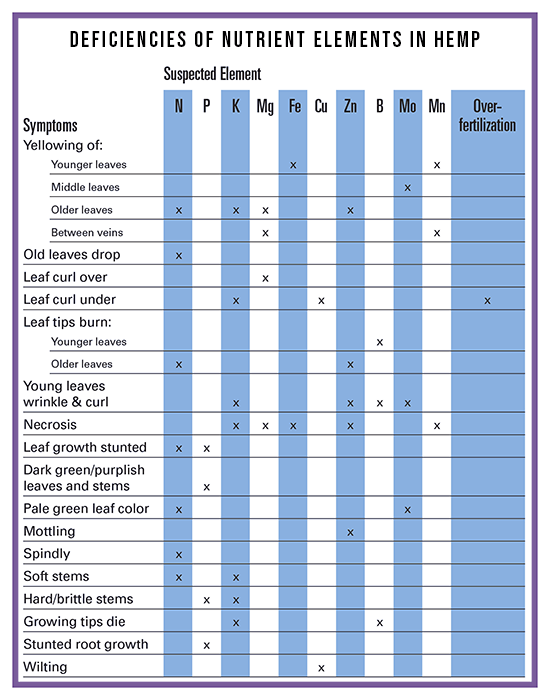
Even though phosphorus (P) deficiencies are uncommon unless the soil pH is too high, indicating a lack of acidity, Leafly.com writes, “the result can be catastrophic for young plants and lead to stunted growth, delayed flowering, low yields and poor resin production in mature plants.” So hemp farmers should be on the lookout for: “Purpling of the petioles (leaf stems) on older leaves, followed by leaves taking on a dark blue-green hue. As deficiency progresses, both upward and outward growth slows drastically, blackish-purple or dark copper colored spots appear on leaves, and dead spots develop on petioles while leaves curl and drop” (3).
A deficiency in potassium (K), the third main nutrient needed by hemp crops, will look a bit different. “Plant growth is altered and leaf margins curl, turn brown and dry out, followed by the yellowing of the remaining leaf surface, which starts to show brown spots,” according to Dinafem.org (2).
While not listed as part of the NPK numbers on the front of commercial fertilizers, other nutrients are crucial to hemp’s success. Shortages in the secondary nutrient sulfur (S) can lead to yellowing leaves with funky tips that curl upward while magnesium (Mg) deficiencies look similar to those of nitrogen. But don’t discount the micronutrients and their effects on the color and shape of leaves. Iron (Fe), manganese (Mn) and zinc (Zn) shortages can result in yellowing leaves, dark veins and burnt leaf tips.
An easy way to pinpoint these variables, according to Rosenthal, is if “ … older generations of leaves display mottling, yellowing between veins or drying or dying of mature leaves, the symptoms match those of deficiencies of the mobile nutrients N, P, K or Mg. Plants scavenge these nutrients from older leaves. New growth appears healthy while the symptoms appear in the cannibalized leaves. If new growth appears stunted, deformed, brown or dying, think deficiency of an immobile nutrient” (1).
Remember though, in caring for acres of hemp, it’s important not to get lost in the details. The aforementioned issues must be handled quickly — and on a commercial scale. Think preventatively in broad solutions, even when problems seem acute. Toxicities often call for flushing the soil with clean water. Deficiencies probably will require more targeted attention.
On the other hand, a visual inspection may imply a nutrient deficiency when disease or other environmental factors could be the real culprits. Remember to assess each situation carefully and check with fellow hemp farmers. Healthy hemp is happy hemp!
Sources:


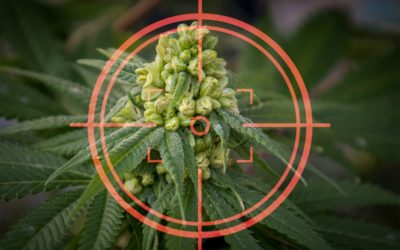
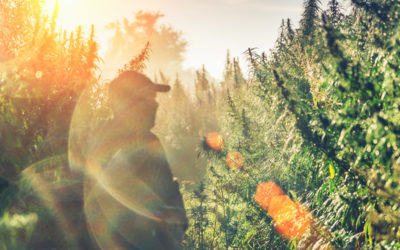

hi from greece creta
a heve industrial cbd hemp farm….this year is bik problem in roots cam the mikitas sclerotium rolfii..
60 prosent in farm is out.
a work the soil biologikal..
telmy what a doo for the next year in this soil farm…
ol the best panagiotis.